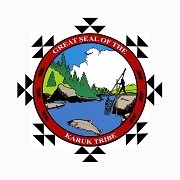Text
CA tribe lands lunker salmon protection
According to Craig Tucker, Kurak tribal policy advisor, “the Kurak are a fish and acorn people.” On June 16, the California Fish and Game Commission unanimously approved the tribe’s petition to list the upper Klamath Trinity River spring run Chinook salmon as endangered to become extinct under the California endangered species act.
Tucker adds, “Science is just now catching up with traditional tribal ecology.” For years agencies that manage west coast fisheries have lumped all runs including seasonal runs into one group, yet the Kurak have always considered spring run Chinook—also called “springers”—as a separate species. They even have a different name for springers.
The petition is a several-hundred-page technical document providing scientific data supporting the listing. The petition undergoes a lengthy public process to allow stakeholders to provide input. The department of fish and wildlife reviews the petition to evaluate its merit. The petition was submitted in partnership with the salmon river restoration council.
Tucker continues that several years ago geneticists at UC Davis discovered that springers have a different genetic sequence and are a unique species. Tucker estimates the pre-European contact historical run on the Klamath was 1.2 million fish returns each year. Now they get excited to see 39 k returns per year.
The petition also calls for habitat restoration and special management zones as well as removing several hydro electric dams on the Klamath River. The dams are operated by Pacificorp, a Berkshire Hathaway group with headquarters in Portland, Oregon. A 2002 Fish Kill destroyed some 65,000 fish due to low-water flows and toxic algae plumes that periodically build up behind the dams. The Klamath River winds 257 miles through Oregon and Northern California, the tribe’s ancestral lands. It is the largest river by discharge in California.
When asked if this fish listing was part of the tribe’s larger strategy for dam removal, Tucker responded, “Sure, we think they should come down either way.”
California Trout, a non-profit conservation group, estimates some 300 miles of habitat is cut off from the fish by the dams. This critical spawning and rearing habitat is crucial for the life cycle of the Chinook. The fish spend several years in fresh water before migrating downstream into the ocean where they also spend several years prior to returning and spawning.
Tucker adds that the fish has significant cultural value for the tribe, both in ceremony and for sustenance. The great seal of the tribe depicts a Chinook salmon and a traditional Kurak man dip-net fishing at Ishi Pishi falls. Tucker also claims that the springers taste better than the other runs, “due to a higher level of fat content in the fish.”
Ishi Pishi Falls is a class VI set of rapids on the Klamath River. The California Fish and Game Commission was the first wildlife resource agency founded in the United States. There are five commissioners who are appointed by the governor and confirmed by the senate.

Scott McMorrow is a disabled environmental journalist living in Northern California.
2 notes
·
View notes